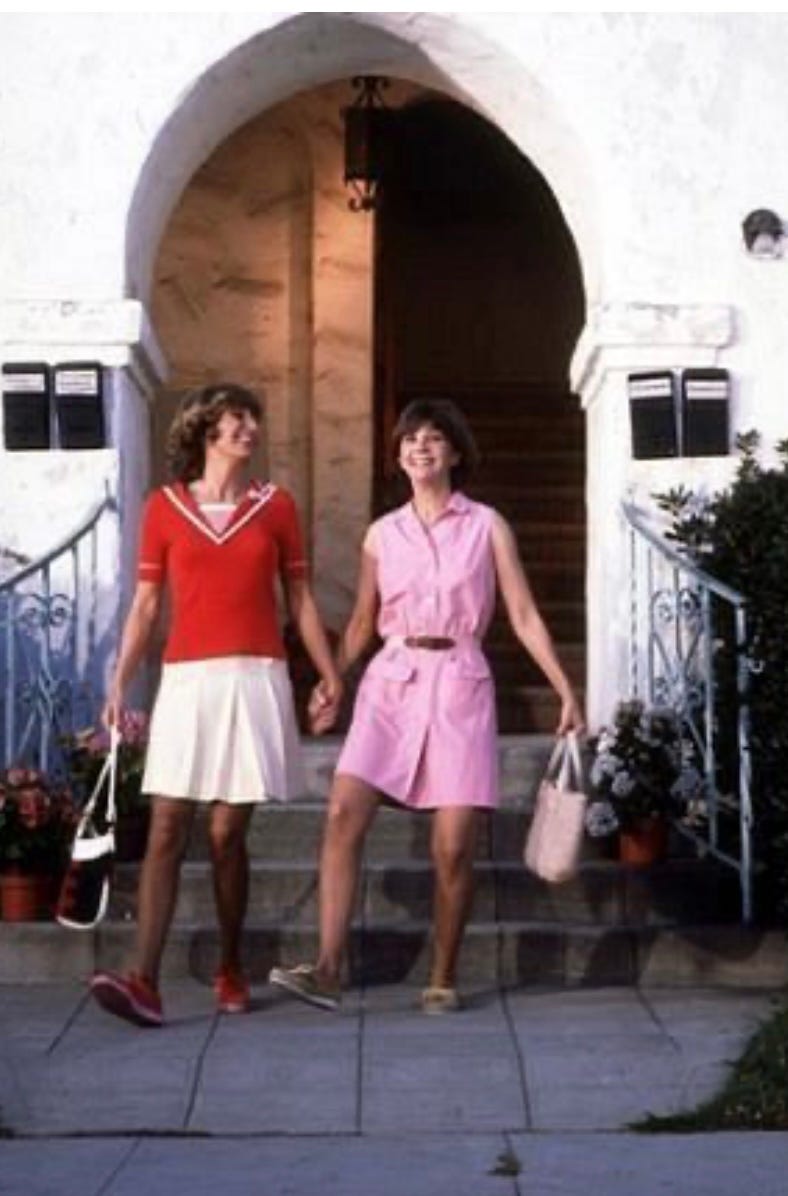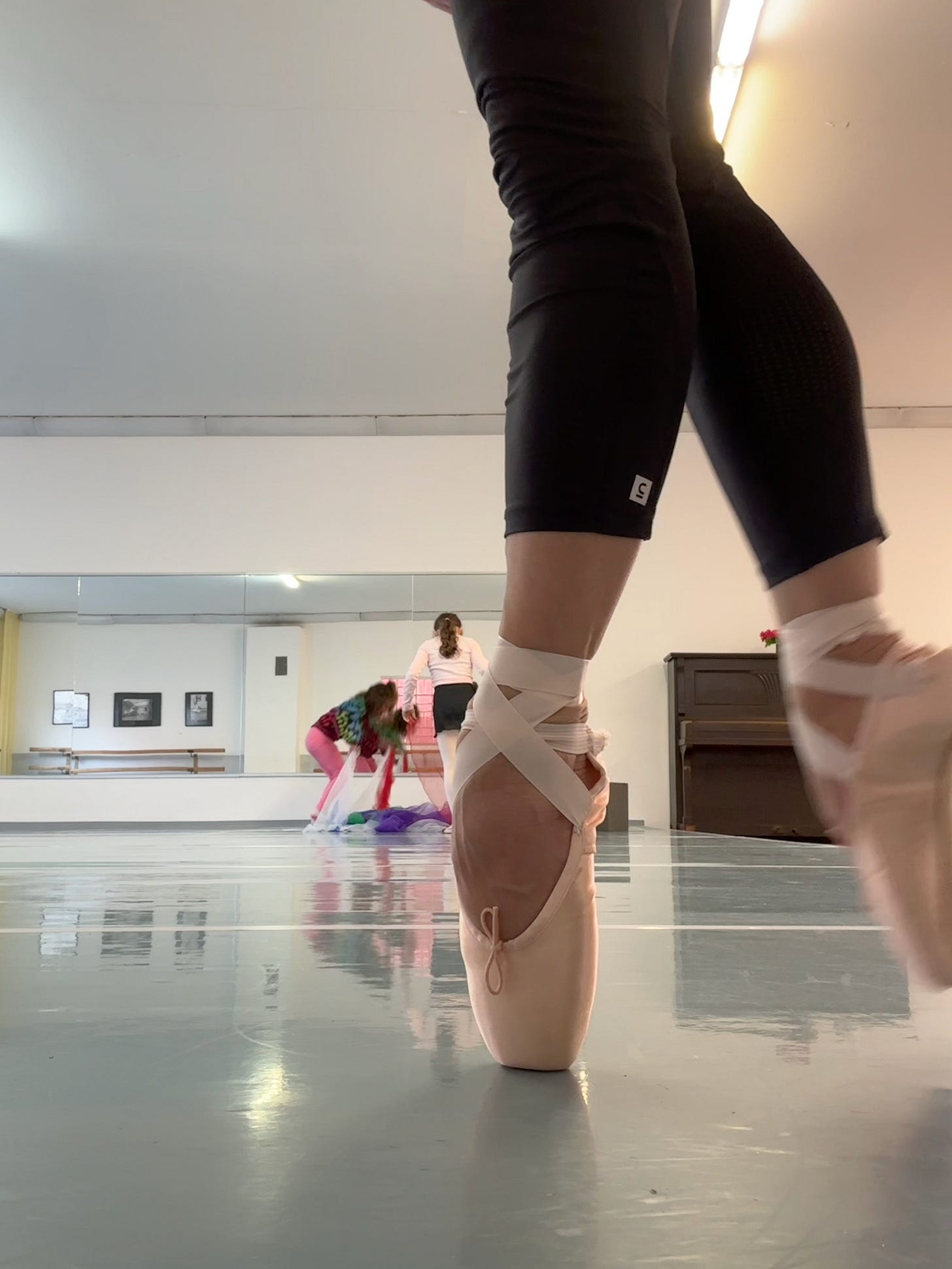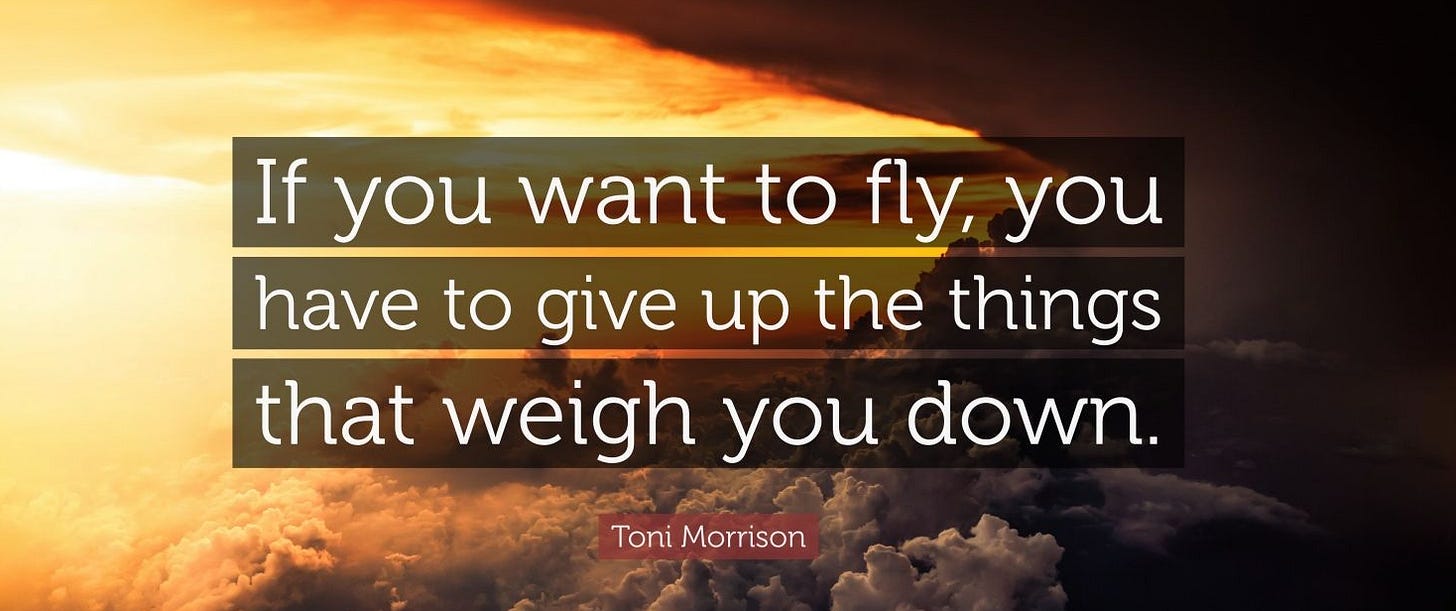Early this Spring, while traveling from Pennsylvania to Germany I made a quick stopover in New York City to see my best friend.
Arms linked Laverne and Shirley style, we headed down Broadway towards the Capezio building, where I had scheduled us a pointe shoe fitting. (In truth…it was my pointe shoe fitting; she came along for moral support and…our arms were linked because she sprained her ankle on the way. But I liked the idea so much, I had to lead with it.)
"Laverne & Shirley" Penny Marshall, Cindy Williams 1981 ABC
I know it must sound like folly to read about two middle-aged, retired ballerinas at a pointe shoe fitting in the Big Apple. But it was such a blast that we documented the event with photographs and shared them with our other 40-something year-old ballerina friends. After trying on every one of their new models, I chose the ones I’ve worn since 1987. (Albeit in a larger size—because two pregnancies and 12 years took a bigger toll on my feet than all my years of dancing combined.)
Once I was home, I used the shoes to demonstrate the correct way to roll up and down to my beginning pointe students. But after a week or two I was reminded of the fun I’d had dancing on pointe. I could imagine not just demonstrating pointe exercises at the barre but actually taking flight, dancing in the shoes. And so I challenged myself to find out if I could do it.
Now, a few months into that challenge, many recognizable facets of my dancer-self have re-emerged. Of course, some things are lacking. But I’m happy to report that one feature that has totally disappeared:
As long as I can remember I have lived with an overactive concern about how I look.
I spent years trying to make my body different than it was. I wanted to be taller. I wanted to be wispy and leggy instead of muscular. Since I could not force myself to get taller, I made myself weak trying to be thinner. I obsessed about how my shoes looked but oddly not how they felt. I cursed myself for not being able to make this pose or that, instead of being concerned with how I looked when I was in motion. An intense sorrow that bordered on anger ruled my thoughts and dictated my actions—all because I did not look the way I wanted to look.
But putting on my pointe shoes now, that sorrow has faded into near oblivion. I can see that my body doesn’t look like someone else’s or look the way it used to. But I don’t seem to care. It’s a revelation.
Perhaps it was too exhausting to carry that sorrow around and too limiting to obsess about it anymore. These days I bypass caring about how my body looks and move right on to caring about how well it works. After these years of teaching I know that when a dancer lines up the bones correctly, the muscles form to hold the positions and the beauty comes on its own.
It’s amazing how motivating and fun ballet dancing can be when curiosity about doing the movement and a goal of growing stronger take priority over measuring up to an ideal.
Recently, it’s come to my attention that this carries over into regular life. Perhaps it’s on account of my age or moving abroad or becoming a mother or losing my in-laws—but in the last decade how I look has fallen far down on my list of priorities. Just the other day I had enough time to either put on make-up or to eat lunch and what did I do? Well, I ate.
Similarly, as we reach our tenth wedding anniversary, I remember that a decade ago I cared a lot about how our life would look. I was convinced about the positive relationship between gifts and a happy marriage. I thought the marriage relationship would mostly be made up of milestones, holidays and events that would be commemorated with gifts. The gifts would be the physical manifestation of our abundant love. Gift giving would be the glue that held us together.
In the beginning everything was new—wife without a clear career plan, then mother, in a foreign language, in a foreign land—It was all very was disorienting. I was pulled along by the current of what I thought people needed to be happy and I was sure that meant lots of gifts and all the right accessories.
“I made these choices,” I told myself when things felt difficult and I thought the challenges were mine alone to overcome. Putting my nose to the grindstone, I just kept going for it. I struggled with the disparity between my wishes and my reality. But I kept that to myself. There were so many good things, so much to be grateful for. I needed to seem like I was enjoying myself.
But you know, I wasn’t always enjoying myself and I found myself keeping a tally of all the days that Thorsten got to travel for work, while I stayed at home. I resented the hours he got to spend among adults instead of with our needy children and the nights he got to sleep undisturbed in a hotel room. I believed gifts could make up for some of this. I even had a list of things he could choose from. But this list served no purpose other than to push a wedge between us.
There is a popular narrative that fuels this thinking. It tells us that the amount and frequency of the gifts we receive is a good way to measure someone’s love for us. When we subscribe to this narrative, the inverse is also true--A person who doesn’t provide these gifts (at the rate and price point that the marketing industry demands) doesn’t love us well enough. And if we don’t inspire people to give us gifts, we must be lacking in value. This requires judgement and record keeping—Two very serious threats to love.
When we, like everyone else, were forced to figure out how to thrive in less than ideal circumstances (i.e. Corona lockdown) the challenges facing us weren’t just mine anymore, they were ours.
I thought I needed presents, but life showed me that what I actually needed was presence.
After that I forgot to keep track of what I thought Thorsten owed me. I forgot about my list of possible gifts. I started to notice what I already had, and what I got to do, instead of what someone else had or was getting to do. I felt curious and motivated. It was like something had moved out of my way and felt love in real time. I wondered to myself, “Is this perhaps what 1st Corinthians is talking about?”
“Love is not self-seeking, it is not easily angered, it keeps no record of wrongs.”
We didn’t include this passage in our wedding. I thought it was an over-used assessment of love. But I wonder now if I missed some important subtleties in the passage. Might it have been intended as instructions? Do these verses contain tips about how to effectively give love to someone?
If I wanted to show someone my love, I could choose to be patient, choose to be kind. I could choose not to be easily angered. I could choose not to keep score at all.
Relative to parenting, psychologist Dr. Becky Kennedy, suggests we take the most generous interpretation of every interaction we experience with our kids. To do this we have to stay present and stop ourselves from being pre-occupied with the past and the future. This practical concept echoes the ideas in 1st Corinthians and I’ve found it to be helpful in my love relationships too.
When I stopped thinking about what I was owed, satisfaction with my life began to grow. When I started being present everyday, I started to like the present. Letting go of assessing and measuring was a freeing act. Sharing life’s challenges with another person was also freeing.
Accepting the situation and being present together cultivated the knowledge in me that we would be ok even if we had to live in a cardboard box. I became confident that if we lost everything--If we had no Italian espresso machine (you can read about my deep love for that here.) If we had no Kitchen aid ice cream maker (more about that here)--things I saw as necessities ten years ago--we would be fine. And thank goodness we figured this out because when my mother-in-law died suddenly, if we had not already nurtured this very real practice of togetherness, that tsunami of loss would have drowned us.
In spite of the multiple industries dedicated to making us believe that gifts and cards and high end appliances will define our relationships, I’ve noticed that Joy comes from being and doing not buying and having.
Love is many things now—patient and kind, funny and flexible. Not always predictable, but honest and marked with attention and pleasure. Curiosity and togetherness have become the balm against fear and dread and we have become threads in an intricate tapestry that we are weaving as we go.
The last 10 years have convinced me that perfection is a thief and gifts are not the glue that holds us together. The milestones are important but the in-between—the living—that’s the stuff I never knew could be so delicious and good. We are continually able to find the spark and the joy in the face of uncertainty because we focus on how it works. And now that it works, it looks pretty good too!





So much wisdom and how you slowly arrived to realize those treasures. So young to recognize and accept and love reality. I love the story of your journey with ballet and coming to accept & befriend your body and the new joy in dancing.